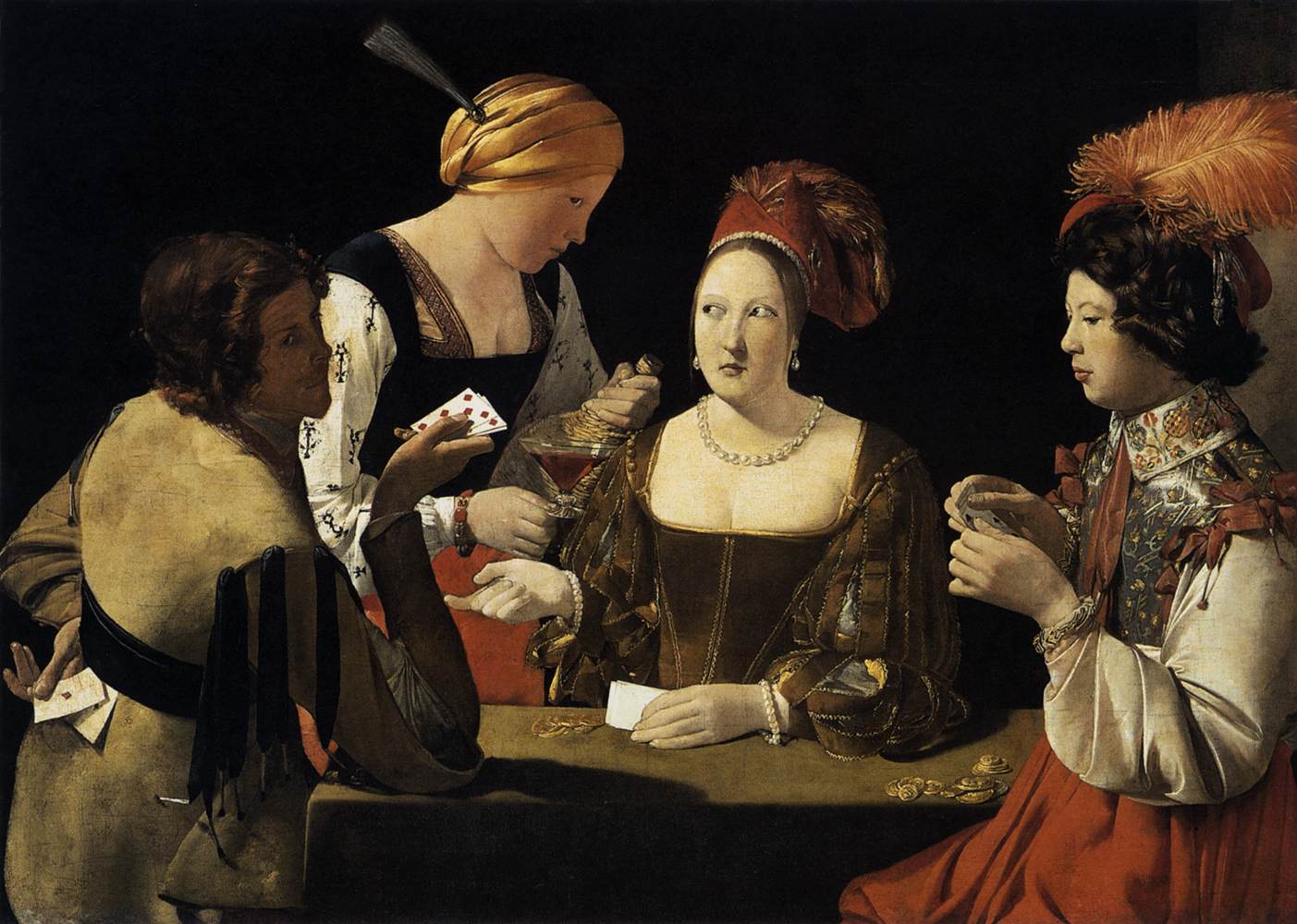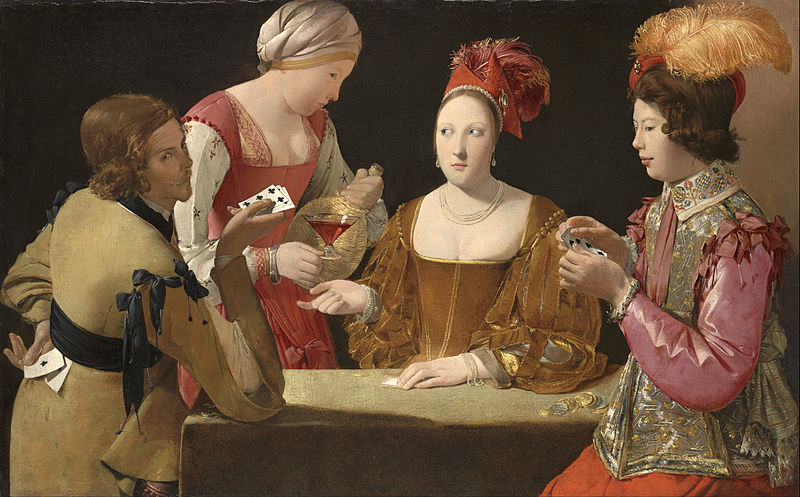.

Cheater with the Ace of Diamonds: Georges de La Tour (1593-1652), 1635, oil on canvas, 106 x 46cm (Musée du Louvre, Paris)
La Tour’s gambling pictures are rather different in atmosphere and intent.
Here, the mood is comic, as a crew of practised tricksters gang up on a well-dressed young dupe and proceed to fleece him at cards. The game is primero, a forerunner of poker, and contemporary viewers with any experience of the game would have known that the cards the sharpers are about to play will make an unbeatable grand point or full house.
The subject can be traced back to Caravaggio, whose cheat looks so obviously menacing -- a young tough straight off the Roman streets -- that only a very innocent dupe indeed could possibly be taken in by him. Again, La Tour dispenses with the low-life aspect and turns instead to the drama of deception inscribed in the players’ faces. A splendidly attired courtesan signals to her accomplice that now is the moment to play the concealed ace, while her sidelong glance cues her maid to step forward with the wine and cause a diversion. As with his religious scenes, La Tour uses lighting and the meanings of lighting as the basis of his picture, though now in a register of profane rather than sacred illumination.
The villains’ success depends on manipulating both what they show and what they conceal, and the lighting works with them; the courtesan, in her gleaming pearls and jewels, deceives through her brilliant appearance, while her accomplice hides his face and his secret cache of cards in the shadow. If, in La Tour’s meditative nocturnes, light is handled so as to imply inwardness and withdrawal from the world, here, the light is very different: flat and external, it stays with the surfaces of things, a worldly light that is the exact opposite of the nocturnes’ light of conscience.
La Tour’s pictures of gamblers, cheats and fortune-tellers are works whose immediate narrative appeal seems to collapse the historical interval between ourselves and the seventeenth century; no viewer needs to know the rules of primero to see who is cheating whom.
Norman Bryson: from Bring them out of the light: a review of Georges de La Tour and His World at the National Gallery of Art, Washington, D.C., in TLS, 20 December 1996
The Cheatwith the Ace of Clubs: Georges de La Tour (1593-1652), 1630-34, oil on canvas, 97.8 x 156.2cm (Kimbell Museum of Art, Fort Worth)
![File:Georges de La Tour 031.jpg]()
The Cheatwith the Ace of Clubs (detail): Georges de La Tour (1593-1652), 1630-34, oil on canvas (Kimbell Museum of Art, Fort Worth)
![]()
The Card Players: Theodor Rombouts (1597-1637), n.d., oil on canvas (Residenzgalerie, Salzburg)

The Cheatwith the Ace of Clubs (detail): Georges de La Tour (1593-1652), 1630-34, oil on canvas (Kimbell Museum of Art, Fort Worth)

The Card Players: Theodor Rombouts (1597-1637), n.d., oil on canvas (Residenzgalerie, Salzburg)

The Cardsharps: Caravaggio (1573-1610), c. 1596, oil on canvas, 92 x 129 cm (Kimbell Museum of Art, Fort Worth)

The Cardsharps (detail): Caravaggio, c. 1596, oil on canvas (Kimbell Museum of Art, Fort Worth)





















